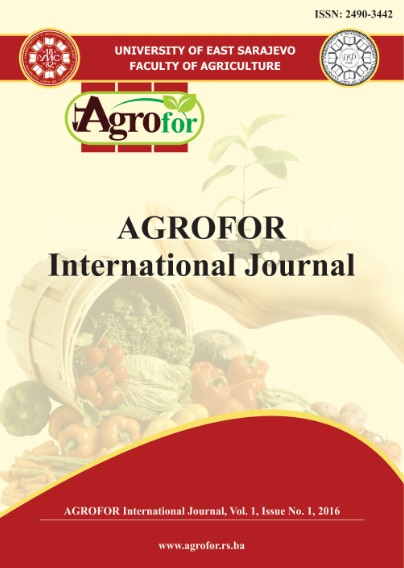EFFECT OF EXCLOSURE ON RUNOFF, SEDIMENT CONCENTRATION AND SOIL LOSS IN EROSION PLOTS
DOI:
https://doi.org/10.7251/AGRENG1601049DAbstract
Nowadays watershed and rangeland management projects play the important role
in water resources and soil management worldwide. Although watershed and
rangeland management projects have the considerable importance as approaches to
rural areas development and natural resources management, more studies have
been focused on their effects on sediment and their effects on soil erosion have
rarely been considered. The present study was conducted in two treated and control
sub-watersheds with exclosure treatment and under grazing respectively, in
Khamsan representative watershed with an area of 4337.27 ha in south of
Kurdistan Province, Iran. Three plots were installed in each western, northern and
eastern slopes for the runoff volume and coefficient, sediment concentration and
soil loss measurement. The exclosure treatment was operated for installed plots in
treated sub-watershed from 2007. Then, all the data of runoff volume and
coefficient, sediment concentration and soil loss from USLE standard plots in both
control and treated sub-watersheds for 52 events over the years 2009 to 2014 were
compared and evaluated. Therefore, in order to the number of plots and subwatersheds,
18 USLE standard plot data were finally recorded and analysed for
each storm event. The results showed the significant (p≤0.05) decreasing effect of
exclosure treatment on runoff volume, sediment concentration and soil loss at plot
scale. Finally, decreasing rates of 15.68, 6.13, 16.67, 24.37 and 21.43% due to
exclosure respectively for runoff volume and coefficient, sediment concentration,
soil loss and sediment yield were obtained. The variables of runoff volume, soil
loss and sediment yield had statistically significant differences (p≤0.05) in treated
and control sub-watersheds. The sediment concentration variable had p value of
0.058 and therefore the effect of exclosure treatment on sediment concentration
was also significant (p≤0.06).

